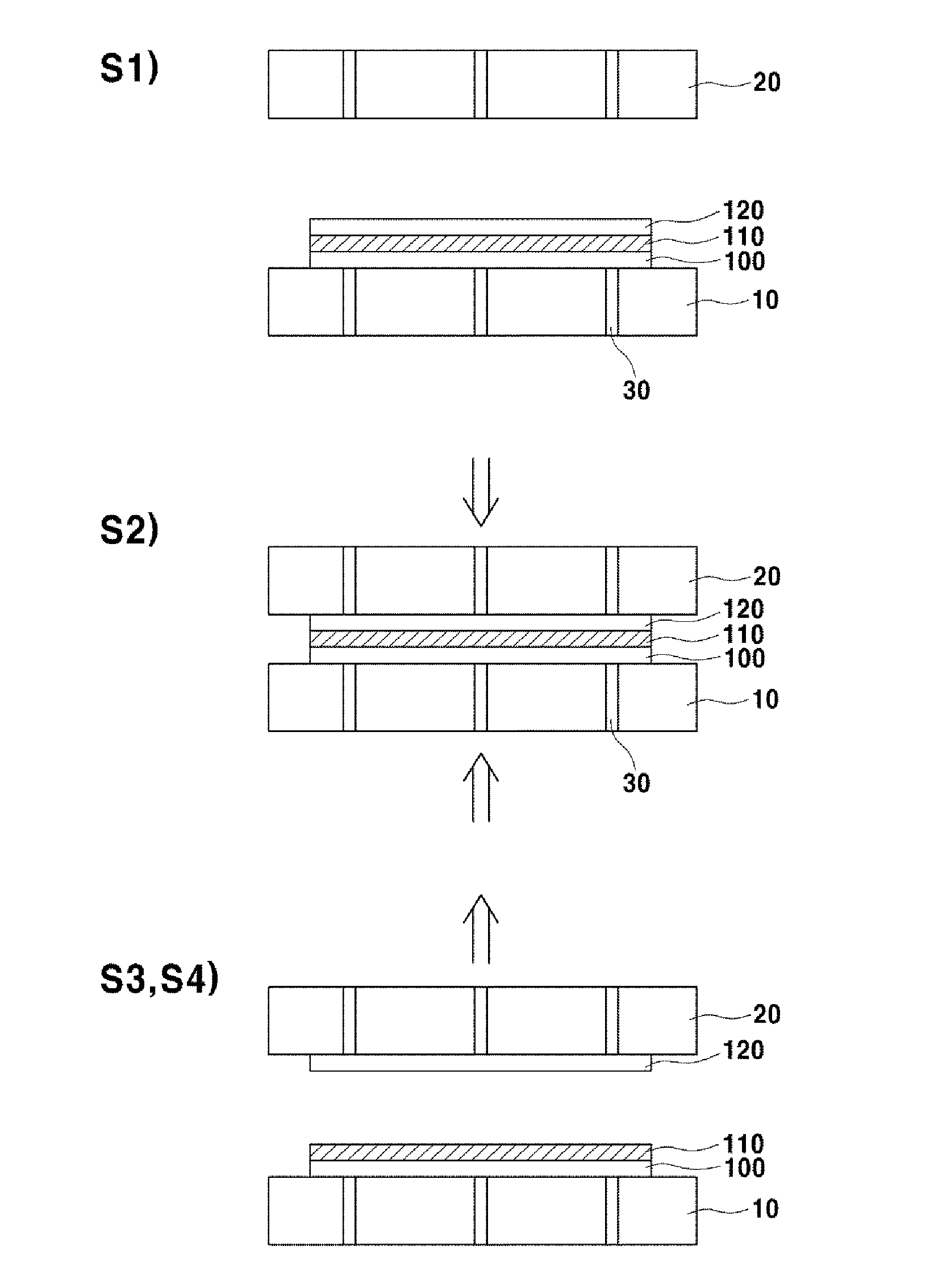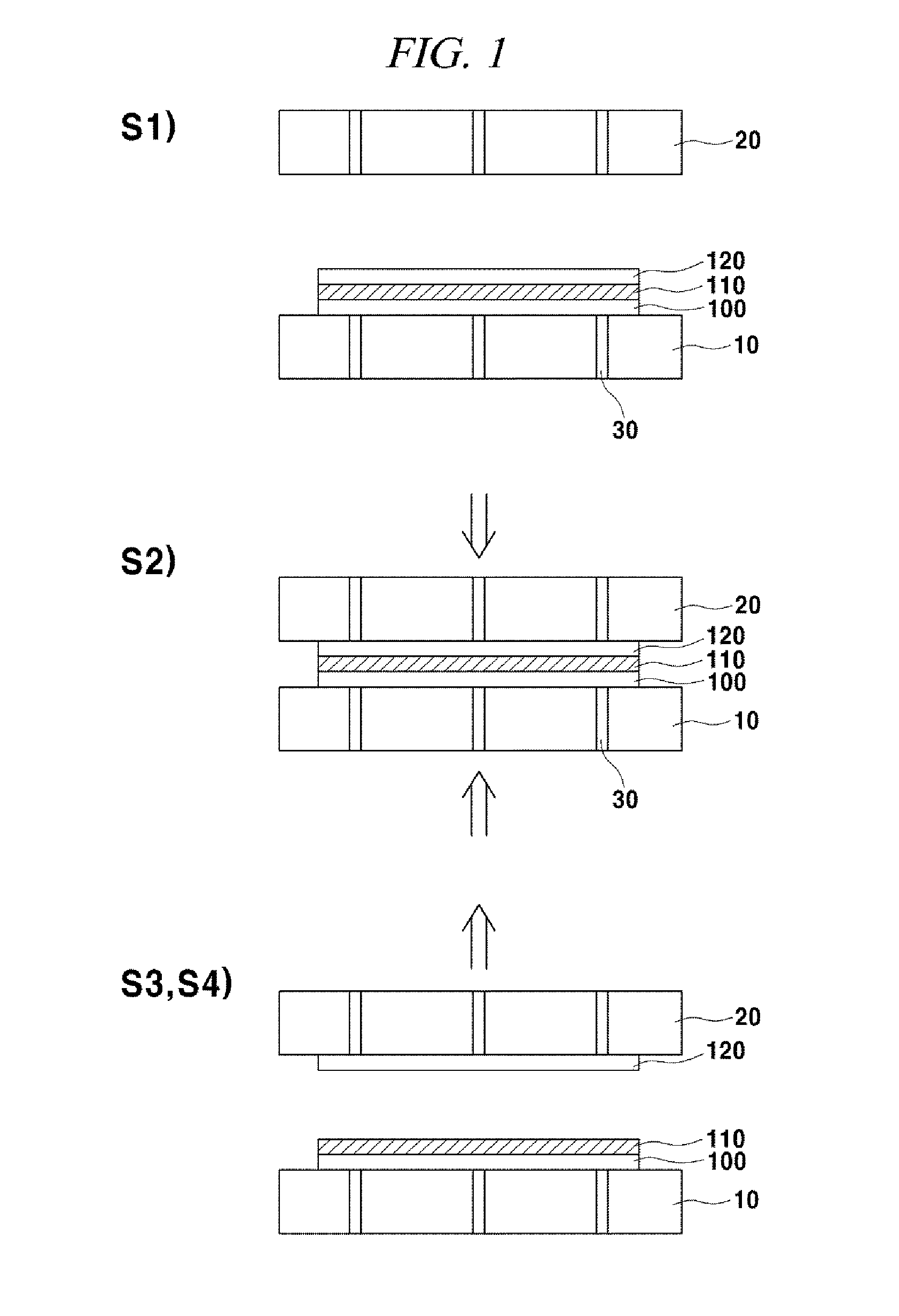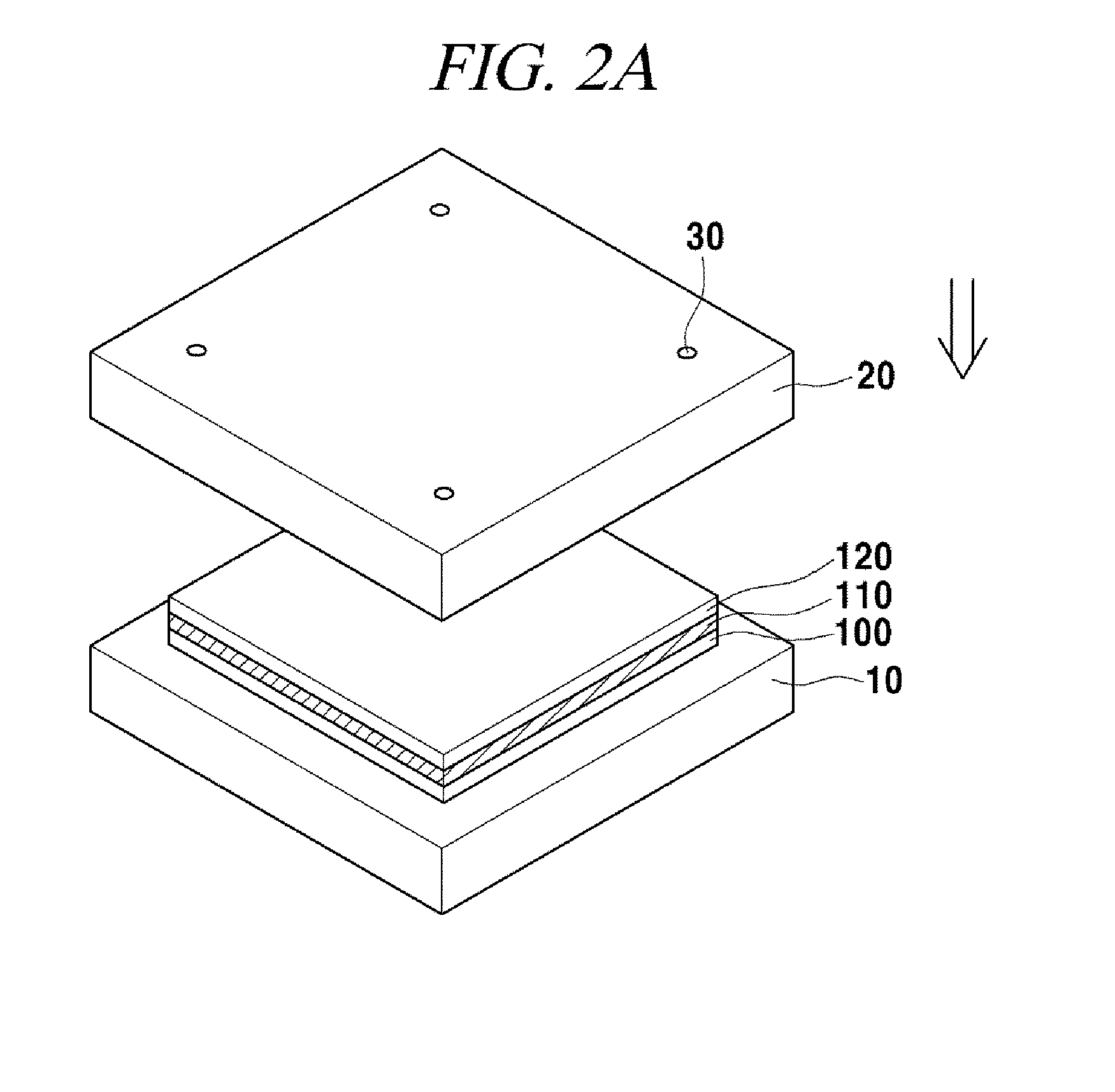Method for transferring graphene using a hot press
a technology of hot press and graphene, which is applied in the direction of single-layer graphene, nanostructure assembly, manufacturing tools, etc., can solve the problems of difficult to be used to mass produce graphene, etc., and achieve the effect of reducing the damage to the graphene and facilitating the transfer of large-area graphen
- Summary
- Abstract
- Description
- Claims
- Application Information
AI Technical Summary
Benefits of technology
Problems solved by technology
Method used
Image
Examples
example 1
[0064]FIGS. 4A and 4B are graphs comparing sheet resistances between graphene transferred onto a PET substrate by a graphene transferring method using a hot press in accordance with present Example and graphene transferred onto a PET substrate by a roll-to-roll transferring method, respectively. In FIGS. 4A and 4B, the graphenes used were formed in the same condition and transferred onto the PET substrates by using thermal-releasable sheets. To be more specific, the graphenes grown on Cu substrates were separated from the Cu substrates by using each of thermal-releasable sheets manufactured by Nitto Denko Co., Ltd. in Japan and Jinsung Chemical Co., Ltd. in South Korea and the graphenes respectively were transferred onto the PET substrates. In a comparative example, when graphene was transferred by a roll-to-roll method, an upper roller and a lower roller were controlled to have the same temperature and a transferring temperature was maintained in a range of from about 120° C. to ab...
example 2
[0067]FIGS. 6s are an optical microscope photo (a) and a SEM image (b), respectively, of a surface shape of graphene transferred onto a 300 nm SiO2 / Si substrate by using a hot press. A partially bright portion indicated a damaged portion of graphene, and a dotted and dark portion indicated a portion formed in multiple layers. (A portion indicated by a line was a portion overlapped when the graphene was formed or transferred). As can be seen from the above result, it was found that by using a hot press, graphene could be transferred onto a rigid substrate with less damage.
[0068]FIG. 7 is a graph of a sheet resistance of graphene transferred onto a SiO2 / Si substrate by using a hot press. In order to check whether or not graphene was well transferred onto the SiO2 / Si substrate, sheet resistances of samples in respective transferring conditions were measured by using a 4-point probe and a result thereof was arranged. The result is that the sheet resistance of graphene was increased as t...
PUM
| Property | Measurement | Unit |
|---|---|---|
| Temperature | aaaaa | aaaaa |
| Temperature | aaaaa | aaaaa |
| Temperature | aaaaa | aaaaa |
Abstract
Description
Claims
Application Information
 Login to View More
Login to View More - R&D
- Intellectual Property
- Life Sciences
- Materials
- Tech Scout
- Unparalleled Data Quality
- Higher Quality Content
- 60% Fewer Hallucinations
Browse by: Latest US Patents, China's latest patents, Technical Efficacy Thesaurus, Application Domain, Technology Topic, Popular Technical Reports.
© 2025 PatSnap. All rights reserved.Legal|Privacy policy|Modern Slavery Act Transparency Statement|Sitemap|About US| Contact US: help@patsnap.com



